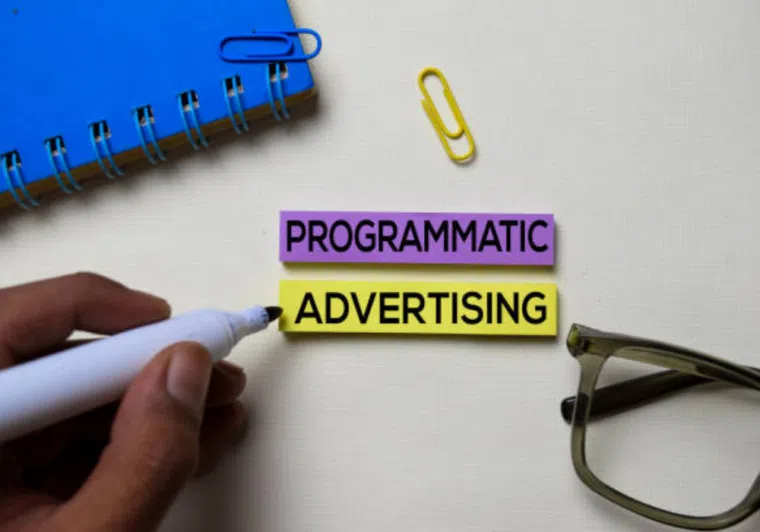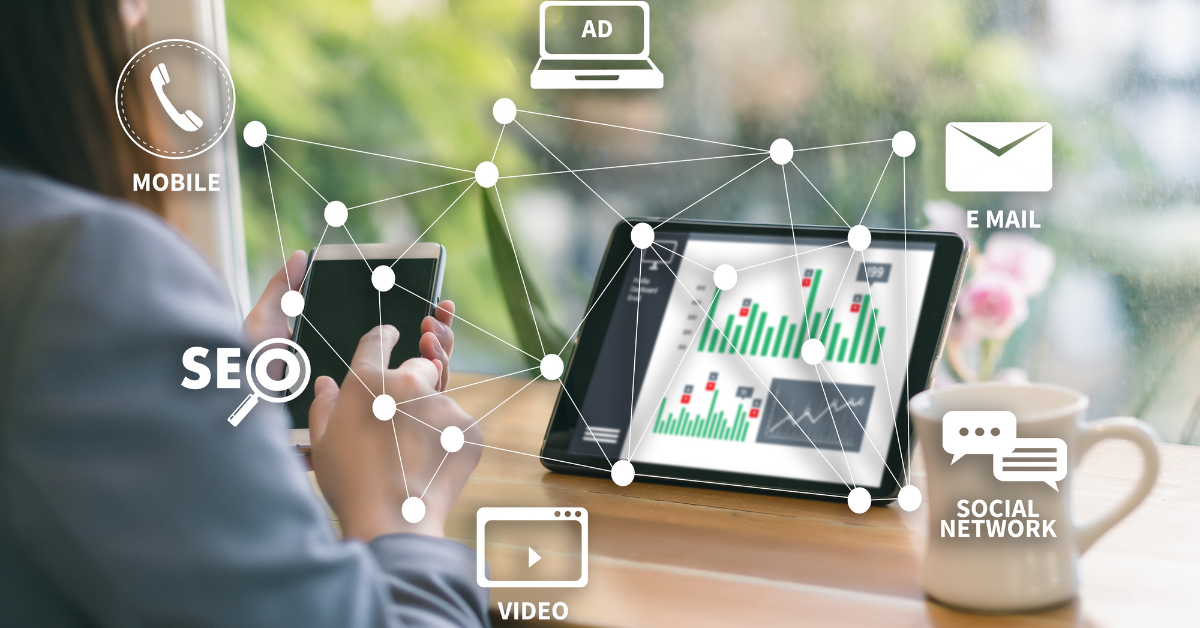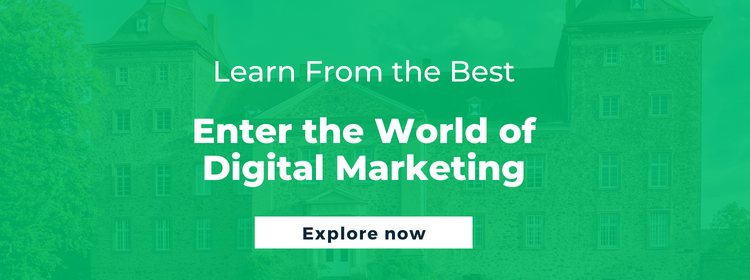What is Programmatic Advertising and Why is it Gaining Importance?

- What is Programmatic Advertising?
- How Does Programmatic Advertising Work?
- What are the Benefits of Programmatic Advertising?
- Types of Programmatic Advertising
- Examples of Successful Programmatic Advertising Campaigns
- Why is Programmatic Advertising Important for Advertisers?
- What are Programmatic Advertising Platforms and Tools?
- How Much Does Programmatic Advertising Cost?
- Gain Digital Marketing Expertise With Emeritus
According to a recent Martech report, programmatic advertising is expected to expand to around $142 billion by 2023. Programmatic advertising is booming in the marketing industry because it does everything that traditional media can’t. Moreover, it helps marketers gain actionable insights into their campaign performance while allowing them to target ad campaigns to relevant audiences and measure Return on Investment (ROI) in real-time.
Programmatic advertising is a type of advertising that automates human negotiations through the use of Machine Learning and Artificial Intelligence (AI) optimization. The intent is to boost efficiency and openness for publishers of advertisements such as website owners. Moreover, this is accomplished through real-time auctions in which advertisements are purchased at the same time a website visitor loads the page. Therefore, marketers are turning increasingly to programmatic advertising for their display ads campaigns and other marketing purposes. This article discusses what programmatic advertising is in-depth, how it works, and its various benefits. Let’s get started.
What is Programmatic Advertising?
Programmatic advertising refers to the practice of purchasing and selling advertising space in real-time via a computerized bidding system. Furthermore, using a complex ecosystem, programmatic advertising makes it possible for advertising agencies and companies to acquire ad impressions that appear on publisher websites or mobile applications. Also, advertisement spots for Digital Out-of-Home (DOOH), online, streaming, television, video, and voice can be purchased through programmatic advertising.
How Does Programmatic Advertising Work?

With the understanding of what is programmatic advertising, let’s explore further to understand the steps that show it works.
1. Advertisers Connect with Publishers
Advertisers who want to buy ad space and promote their brand, products, or services, connect with publishers, who have websites with ad space or inventory to sell, through programmatic advertisements.
2. Start a Digital Campaign
When an advertiser wants to start a digital campaign to market their goods or services, they contact their programmatic ad agency or trading desk. Moreover, the agency automates the acquisition of ad impressions using a Demand-Side Platform (DSP).
3. Purchase Ad Inventory
DSPs enable advertisers and their programmatic ad agencies to buy ad inventory from several publishers. Moreover, it helps them target ads to the right audiences using a data management platform, which collects and organizes data from various online and offline sources.
4. Use Supply-Side Platform For Advertisements
If a visitor who visits a publisher’s website is a target audience, then the publisher’s website will request an advertisement from the Supply-Side Platform (SSP). Moreover, a publisher will utilize an SSP to sell advertisements to increase the value derived from an impression. Therefore, the SSP holds an auction for its buyers, and the DSP is integrated into the entire process.
5. Real-Time Bidding
Real-time bidding is the term used to describe the process, which takes place within the SSP or ad exchange. The DSP compares the advertisement to its data and target parameters using the information it has received. It is used to determine the first impression’s bid price.
Even though it seems like a lengthy process, the bidding is completed in about 100 milliseconds. The publisher’s website will display the impression once it has been sold. Every time a person visits the website or refreshes, the procedure is repeated.
What are the Benefits of Programmatic Advertising?
Using programmatic advertising as part of your marketing plan can provide several benefits to your business. Here is a breakdown of some of the most important advantages:
- It helps marketers reach a large target audience
- Marketers can receive real-time data to see how their ads are performing through programmatic advertising
- Marketers can use programmatic advertising to increase the awareness of their product or service in a cost-effective way
Types of Programmatic Advertising
All types of programmatic advertising involve buying ad inventory. Here is a look at the four most common types of programmatic advertising:
1. Real-Time Bidding
All advertisers can participate in this sort of bidding, which involves real-time ad auctions. An additional name for this is the “open marketplace”.
2. Private Marketplace
This kind of bidding takes place when publishers have made deals with a predetermined number of advertisers.
3. Preferred Deals
This type of programmatic advertising is also called “spot buying”. In this case, advertisers have the opportunity to purchase advertising space before they are placed on the open or private market.
4. Programmatic Guaranteed
It’s like a preferred deal but without auction bidding. In this case, the publisher and advertiser agree upon fixed pricing for ad inventory, resembling a preferred deal but without auction bidding.
Examples of Successful Programmatic Advertising Campaigns
Here are two instances of programmatic advertising in the real world.
1. IHG
Hotel group IHG, which is the parent company for brands such as Holiday Inn and Intercontinental, has begun running programmatic ads to encourage users to book directly with them rather than with third-party sites like Expedia or Booking.com.
2. Missing People – Child Rescue Alert
Missing People is a UK-based charity which, in 2016, used programmatic advertising to raise awareness and response rates for missing children. The organization created location-based ads, which highlighted the charity’s Child Rescue Alert System and encouraged users to sign-up for the system. This led to a 20% increase in the response rate.
ALSO READ: Top 7 Fundamentals of Digital Marketing Every Marketer Should Know in 2023
Why is Programmatic Advertising Important for Advertisers?
Before the automation of programmatic advertising, it was challenging for marketers to obtain available advertising space. As a result, 60% of the publisher’s available ad space remained unsold. Automation has made this simpler for advertisers. Apart from that,
Here are some of the benefits that programmatic advertising offers to advertisers:
1. Ability to Scale
Advertisers can reach a large audience through the use of programmatic advertising since it allows them to purchase ad space from any accessible inventory.
2. Real-Time Flexibility
Advertisers can make updates to their advertising in real-time based on the impressions that they receive, and they may make use of a wide variety of targeting parameters, such as age, gender, and area.
3. Targeting Capabilities
Programmatic Targeting Maximizes Advertising Budgets: Enhancing Efficiency and Effectiveness.
What are Programmatic Advertising Platforms and Tools?
Publishers can utilize many unique platforms and tools to locate the appropriate services and gain access to suitable advertisers that fit their requirements. These include:
1. Sell-Side Platform (SSP)
With the help of this platform, publishers can sell the advertising impressions they generate to advertisers in real-time. The following is a list of SSPs for publishers:
- Google Ad Manager
- Amazon Publisher Services
- OpenX
- Google AdMob
- Yahoo Ad Tech
2. Demand-Side Platform (DSP)
With the use of this platform, advertisers can acquire advertising space on several channels all at once. Some of the top DSPs include:
- Display & Video 360 (Google)
- The Trade Desk
- Amazon DSP
- LiveRamp
- Adobe Advertising Cloud DSP
- StackAdapt
3. Ad Exchangers
Demand-side platforms make a connection to an ad exchanger, which causes the cost of advertisements to change based on the competitiveness of the inventory.
Here are some of the better-known ad exchangers available to publishers:
- Xandr (Microsoft)
- Verizon Media
- OpenX
- PubMatic
- Google Ad Exchange
- Index Exchange
How Much Does Programmatic Advertising Cost?
 There is a widespread misunderstanding that programmatic technologies cannot be of use to small enterprises. That isn’t true. The standard method for purchasing programmatic advertisements is based on the Cost-per-Thousand-Impressions (CPM) model. CPMs often fall between $0.50 and $2.00.
There is a widespread misunderstanding that programmatic technologies cannot be of use to small enterprises. That isn’t true. The standard method for purchasing programmatic advertisements is based on the Cost-per-Thousand-Impressions (CPM) model. CPMs often fall between $0.50 and $2.00.
CPMs, however, might be considerably higher depending on things like:
- Which DSP do you select?
- Your target audience
- The level of rivalry
Gain Digital Marketing Expertise With Emeritus
If you are interested in building a successful career in programmatic advertising and other areas of digital marketing, Emeritus can help you get started. Enroll in our sought-after online digital marketing courses taught in collaboration with top educational institutions and get future-ready today.
Write to us at content@emeritus.org






